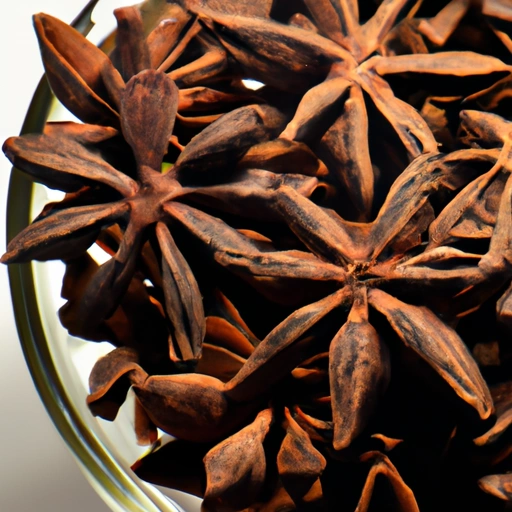Aniseed
Description

Aniseed, also known as anise, is a highly aromatic and sweet-tasting spice that is widely used in a variety of cuisines around the world. Derived from the Pimpinella anisum plant, it is known for its flavor, which resembles that of licorice, fennel, and tarragon. Aniseed is available in whole or ground form and can be used to add a unique depth to both sweet and savory dishes. It's a staple in European bakery, a common flavor in American liquors, and an essential ingredient in South Asian and Middle Eastern cuisines.
Common uses
Aniseed is commonly used to flavor a variety of dishes including bread, cakes, cookies, and sweet pastries. It is also a popular flavor in alcoholic beverages such as absinthe, ouzo, and sambuca. In savory dishes, aniseed is used to season meat, particularly pork and poultry, and to enhance the flavor profile of soups, stews, and sauces. Its sweet, distinctive taste is also often found in confectionery and candy making.
Nutritional value
Calories
Aniseed typically contains about 337 calories per 100 grams (about 3.5 oz).
Protein
The spice provides approximately 17.6 grams of protein per 100 grams (about 3.5 oz).
Fat
Aniseed contains about 15.9 grams of fat per 100 grams (about 3.5 oz).
Carbohydrates
Aniseed has around 50.02 grams of carbohydrates per 100 grams (about 3.5 oz).
Vitamins
It is a good source of B-complex vitamins such as pyridoxine, niacin, riboflavin, and thiamin.
Minerals
Aniseed is rich in minerals like iron, magnesium, calcium, manganese, zinc, and potassium.
Health benefits
Aniseed is known for its potential digestive benefits, due to its antispasmodic and carminative properties. It may also have mild expectorant properties, which can help in relieving coughs. Aniseed has been traditionally used to alleviate menstrual discomfort and to increase milk production in breastfeeding mothers. The antioxidant properties of aniseed can also contribute to overall health by fighting free radicals.
Potential risks
While aniseed is generally considered safe for most people, it can cause allergic reactions in some individuals. It should be used with caution by those who have an existing allergy to plants in the Apiaceae family. Ingesting very large amounts of aniseed may also lead to nausea, vomiting, seizures, and pulmonary edema.
Common recipes
Aniseed is used in cookies such as pizzelles, springerle, and biscotti. It is a key ingredient in Indian chai tea and many curry powders. In Middle Eastern cuisine, it flavors sweet pastries and breads.
Cooking methods
It can be added whole to recipes or ground into a powder. When cooking with aniseed, it's usually best to add it early in the cooking process to allow its flavors to meld with the dish.
Pairing with other ingredients
Aniseed pairs well with cinnamon, cloves, vanilla, citrus, and chocolate. In savory dishes, it complements tomatoes, poultry, and seafood.
Summary
Aniseed is a versatile and aromatic spice with a long history of culinary and medicinal use. It offers a sweet, licorice-like flavor to a variety of dishes and is known for its potential health benefits. When used in moderation, it can be a delightful addition to both sweet and savory recipes, contributing depth and complexity to the flavor profile of a dish.